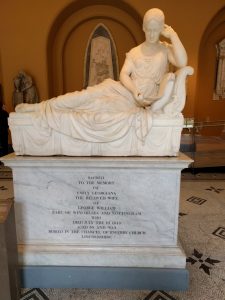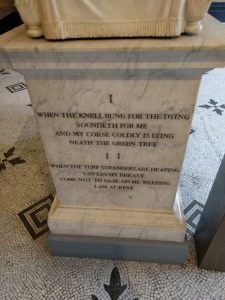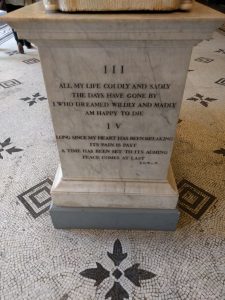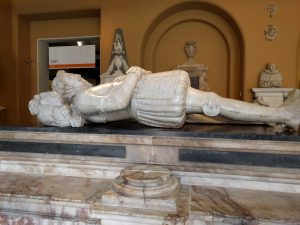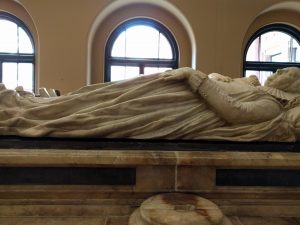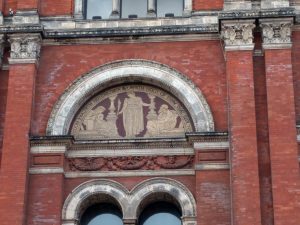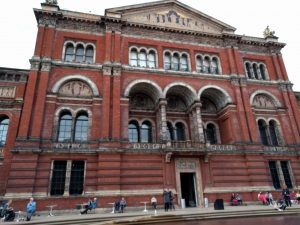Every good story should start with the same thing:
Food. All kinds of food.
In this case, Irish food.
But to know Irish food, you need to know the history of the country.
There were people living on the isle going back to, oh, nearly the beginning of time. I know, because I saw a long boat in Dublin dated to 2500 BC and preserved in a peat bog. (As all good things are in Ireland, including butter. Apparently, the ancient Irish would bury butter to preserve it, and butter is still being discovered in bogs. Including this 2000 year old butter.)
More on the long boat and the National Museum of Ireland - Archeaology soon, but back to the history and food.
The Vikings invaded around 800 AD. They raided and pillaged and, more importantly, took wives and settled here. They assimilated and became part of Ireland, as much as the original Irish, while also leaving their own stamp on the country.
The Normans (Normandy was in northern France) invaded around 1150ish, give or take fifty years. Ever heard of Strongbow? Yeah, he was the guy. And I saw his tomb in Christ Church in Dublin! (Sort of, the real one was destroyed when the roof collapsed 150 or so years ago, but they found a grave from the same time period to replace it. Still a Medieval grave over his body, so it’s cool. Again, more on that later.)
But the Normans weren’t actually coming from France. They’d invaded England back in 1066, so technically, Ireland was being invaded by English Normans. Or a mix of those peeps. Either way, it brought Ireland under the rule of the English.
Following that was 800 years of English rule. And believe me, the Irish know it. So they should.
Then there was the Reformation, when Henry the Eighth got a bee up his bonnet (which is a polite way of saying it he took up with a girl who was not his wife), broke with the Catholic Church, got a divorce, founded the Church of England, then married his girlfriend Anne Boleyn.
For the record, Anne Boleyn is my second favorite historical figure. I love everything about her, right down to her alleged last words before execution by beheading: “I have a little neck.” She was also the mother to my first favorite historical figure, Elizabeth I. Cleopatra being number three. (Yes, I like strong women!)
So here are the Irish, circa 1600s, under English rule. Then the “undertakers” arrive, who “undertake” to confiscate Irish lands and give them to English Protestants for farming, etc. (Catholic was the name of the game in Ireland before that). These tracts of land were called plantations. This was a system where so and so worked the land, passed the profits up to a guy who owned the land, who passed it up to the guy who was the undertaker, who then passed it off to the government. Everyone kept their percentage and was happy—except that poor Irish guy who had his lands confiscated because he was Irish and the undertakers were in power.
Well, the Irish are rebels. Being of Irish descent, I feel them. There’s a bit of a rebel in me, too.
So the Irish started their uprisings, though I’m sure there were more before those I mention here. If you want a full list, you can Google it, but I’m going to the most recent. Uprisings during the French Revolution in 1798. More in the early 1800s, yet again around 1850, more in the 1880s.
Then came the Easter Rising of 1919: A declaration of the Irish Republic, men trapped in St. Stephen’s square and rebelling against the English, no matter what cost to themselves. 485 people were killed, the rebels were caught and eventually executed. Including James Connolly, if you’ve ever heard the name.
More fighting ensued and finally, in 1922, Ireland gained its Independence.
To that, I say, Up The Rebels!
Why is this important?
Because the food of a place is the food of their history.
The Irish traditional dishes are simple, because they did not have access to amazing foodstuffs to work with. They were oppressed. There was the potato famine, when a million died and another million emigrated. (I went to some famine cottages, more on that later.)
The ground is stony rather than rich. When I asked why and how there were so many stone fences everywhere in Ireland, my guide told me it was because stone is everywhere. They can’t plant fields without removing stone, as it’s just inches from the surface. When my guide was in America, he was stunned to see an excavator going 10 feet or more down and finding only soil.
But most of all, every country is a product of its location (the ocean!) and its history (invasions!)
So the traditional Irish breakfast of eggs, sausage, sautéed mushrooms, black sausage, white sausage, grilled tomatoes, and baked beans is similar to the British full breakfast. It’s meant to keep a body full to work the fields until dinner. FYI, it does the job. I ate a full breakfast every morning in Ireland and did not need to eat again until evening.
Fish and chips are common in both countries, but the fish is local to wherever you are eating. The mussels I ate were local, brought in just that morning from a port not 15 miles away. Coddle is a soup made with simple ingredients easily available. Potato and leek soup is a testament to what grows on rocky ground. Soda bread? I dunno. But it’s delicious.
And so…my meals in Ireland. I’ve included beverages too, though they are not quite as traditional. But the beverages were delish.
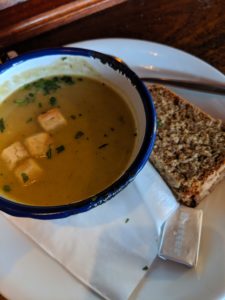
My very first meal in Ireland, at The Hairy Lemon Pub: Vegetable Soup with Homemade Brown Bread.
I ordered it because a local gentleman at a table ordered it. He was reading the daily newspaper, chatting with the bartender he knew by name, and ordered the soup. I thought, if this gentleman–old enough to be a grandfather and with glasses perched on his nose–was ordering the soup for his lunch, I should too. I expected something chunky, like a minestrone. But it was smooth and creamy and so, so good. The bread was heavy and thick, nothing like a loaf of “sliced bread” here in the US. I could have eaten a whole loaf, except they would have had to roll me out of the pub.
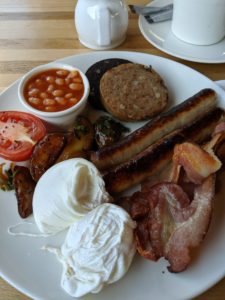
Full. Irish. Breakfast.
I confess, I did not eat more than a bite or two of the black and white puddings. And, no, it wasn’t because the black pudding is blood pudding. That slight metallic tang didn’t bother me in the last, nor did knowing that it was made with blood. It was the spices. I don’t know if it’s made with allspice or anise or what, but there is a spice there I really, really do not like. I couldn’t eat the white pudding for the same reason. I also don’t eat pumpkin pie because there is a spice I don’t like, so the blood pudding shouldn’t take it personally. 🙂
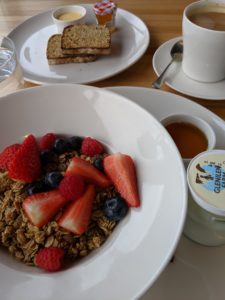
I decided to eat “healthy” on day 2.
I don’t know what I was thinking, lol. You don’t eat healthy on vacation! Still, it was delish, and the butter was Kerrygold and worth every bite. A little bit of orange marmalade on that butter and bread, the Kerry yogurt mixed with the granola. Mm Mm Mm. I didn’t miss the sausage a bit.

Mussels and shrimp on beautiful pasta. It was at my hotel bar, which I loved. Sophie’s at The Dean became my home away from home. Breakfast, a drink, dinner–all multiple times in the 5 days I was there (2 at the beginning, 3 at the end of my trip.)
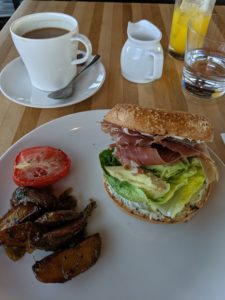
Breakfast on my last first round of days in Dublin.
That right there is a bagel with cream cheese, avocado, prosciutto, along with a tomato and potatoes. Why do we not have a warm tomato and potatoes for breakfast, is my question.
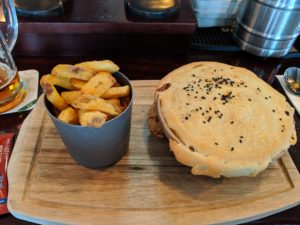
So I roll into Cork and I wander, and I’m more starved than I thought I would be. So far my breakfast has held me over until lunch. I stop at a little pub called the Linen Weaver and have some shrimp. Which I ate so fast I had no picture.
I wander again, heading into a museum that I wandered in so long I was kicked out at closing time. I lost my sweatshirt somewhere and had to buy another. Then I found a gastropub I fell in love with. The name has totally escaped me now, but oh, this beef pie was ah. maze. ing. You could tell the stew under the puff pastry had been cooking all day, it was so full of flavor.
And, er. I’m hungry just writing this.
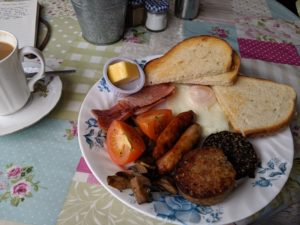
Still in Cork, and I venture a few doors down from my hotel to a little tea shop. It was packed with locals, so I knew it was good. (Yes, you can tell locals from tourists!) As usual, a regular Irish breakfast.
I still don’t know why we don’t have mushrooms and tomatoes at breakfast. This seems like a very good idea to me.
Also, I bought Kerrygold butter when I got home. It’s that good!
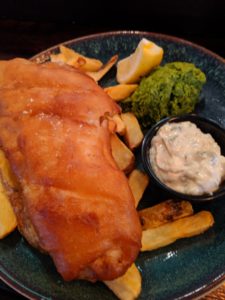
That, my friends, is fish and chips done right.
I have nothing else to say.
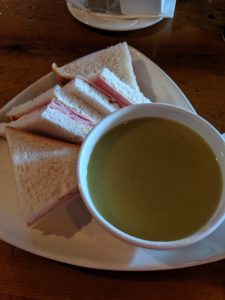
When I came into Killarney I couldn’t get into my hotel. Yet I had a backpack I was carrying around, and I was also exhausted. So I found the nearest pub, settled in to journal and then write. While I was there, I had potato leek soup and a ham and white bread sandwich.
Simple fare, but I could not have enjoyed it more. The soup was amazing, and I’ve decided to try it myself. It was so creamy, and had that light oniony, scalliony bite of the leeks. I know why this dish is traditional, but I also know why it is so loved!
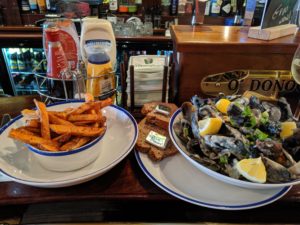
And then I ate again, lol. Because my hotel room still wasn’t ready.
These mussels, though? So fresh, and when I asked, the manager of the bar said they’d been brought in just that morning from the coast. Which, in Cork, is barely 10 to 15 miles away. Can you imagine? Here in Michigan, mussels have to be frozen and shipped in. And though we have the great lakes, much of our fish is still frozen and shipped in. I adore the idea that you can eat fish caught just that morning. It’s common in so many places in the world–and yet a luxury for me. It is the type of thing that makes me wonder, what is common for me that is a luxury somewhere else?
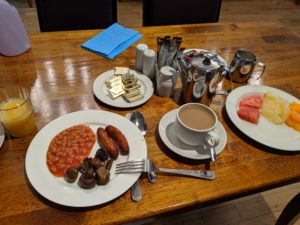
Soooo… I might have gotten into the buffet at my hotel in Killarney. But really, baked beans and mushrooms and coffee and fruit? I could eat like this every day.
As long as someone else cooked it!
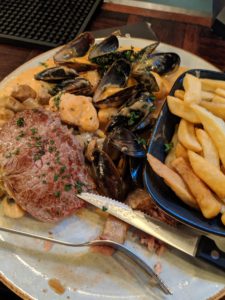
My last night in Killarney I stopped into a pub on the recommendation of my guide. I met a lovely gentleman, lean and tattooed and rough around the edges, but sweet as pie. Or Irish cream. A mason by trade, he had a smile a full mile wide. He was chatting with a couple from Holland on vacay who were there to learn English. Someone told them the best way to learn a language was to go where it was spoken and hang out in the pubs. So they did.
And there I was, chatting and laughing. And suddenly starving. So I ordered the local version of a surf and turf. I ate the whole thing–though I shared my chips (fries) with the mason.
That mason told me of a place to visit in Killarney that was his favorite. A grove of yew trees that were hundreds of years old. He said he was a recovering addict, and when he struggles, he walks to that place. To him, it is like wearing ear plugs. All of the world and the pain and the bustle is drowned out. All that is left his him and the yew trees and space to be.
My guide and I tried to find it, but we never did. I like to think it’s because it’s my mason’s special place, meant only for him.
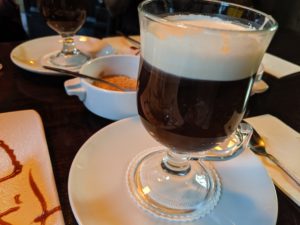
That is an Irish coffee, made by my own hand during a food tour in Dublin. The guide walked us through every step of the way. I have to say, mine was perfect.
I’d give you the recipe, but then I’d have to kill you.
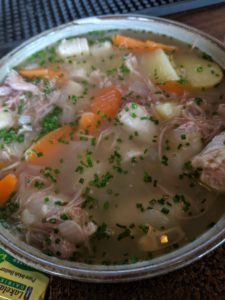
On my very last day in Ireland, I had my very favorite dish: coddle. It’s a stew with carrots, potatoes, sausage, rasher bacon…and that’s it. Still, it was so flavorful I asked the bartender what else it was seasoned with. The answer? Salt and parsley.
Now, this bartender was reluctant to serve it to me. I ordered it and he said it was unusual, I might not like it, was I sure? All I could think was, it’s coddle. It’s a local dish. Of course I want to try it–and if I don’t like it, my mama taught me to eat it anyway and pay my compliments to the chef.
I didn’t have to lie. I could have bathed in it.
Knowing what I do about food, it was the bacon and sausage that flavored the broth. It likely cooked for hours and hours, the spices and meat juices seeping into the potatoes and carrots, creating the depth of the broth. All I know is it was probably the simplest and best meal I at in all of Ireland.
Except maybe that potato and leek soup with the ham sandwich.
Just goes to show, simple is best.
Well, Here We Are In The Beverage Section
I drank everything from coffee to juice to gin to Guinness to a drink made with seaweed.
Enjoy.
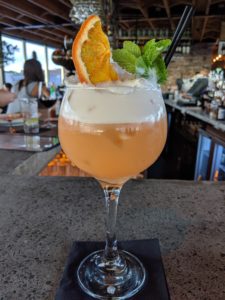
Speaking of Sophie’s at The Dean, here is their signature drink. The Sophie, of course.
Er. I might have paid the bartender 20 euro to give me the recipe, it was that good. We’ll see if I can recreate it.
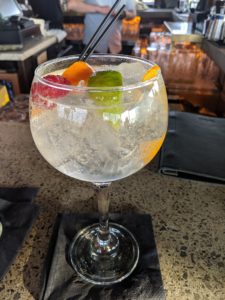
This beverage has no name. I asked Cat, my bartender, to make me something yummy. This was made with Dingle gin, tonic, something elderberry-ish, and a bunch of dried fruits. Oh, if only I had this recipe too!
My first and only Guinness in Ireland
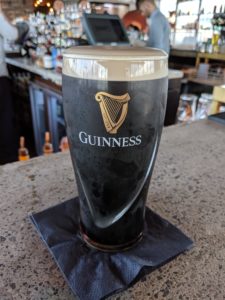
A Porter at The Hairy Lemon
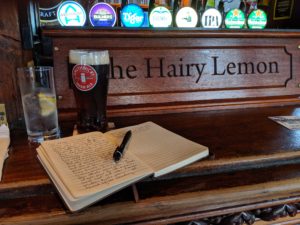
An Americano (Espresso with water added)
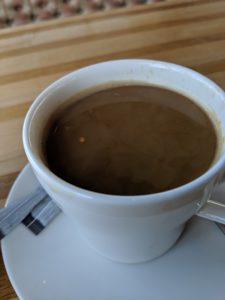
An IPA from a local brewery in Cork
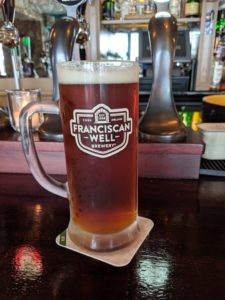
Water (See! I drank water!) on the train between Dublin and Cork

Something made with seaweed in Cork
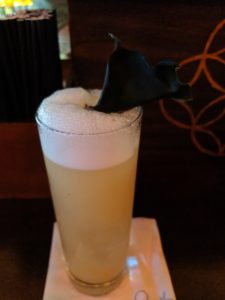
I can’t for the life of me remember, but it was in Cork
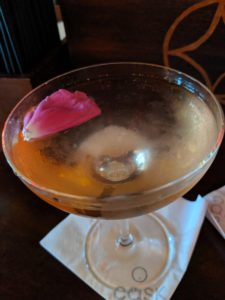
An IPA (Irish Pale Ale) at a local pub in Killarney
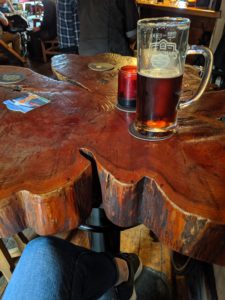
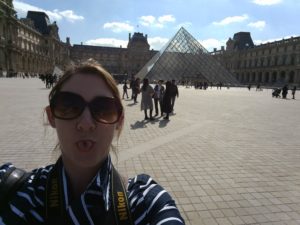
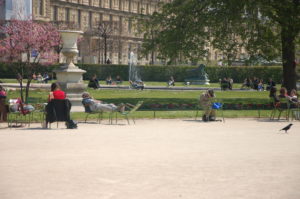
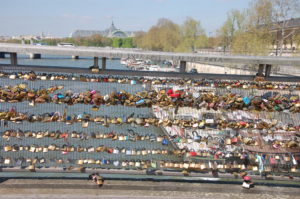
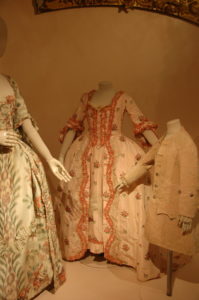
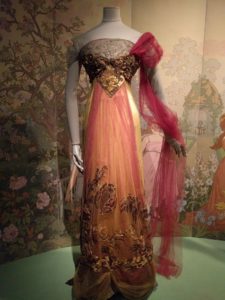
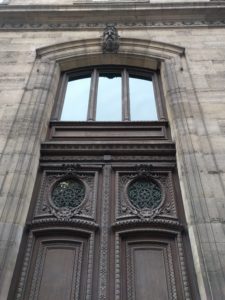
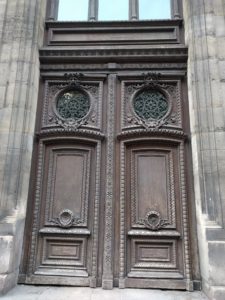
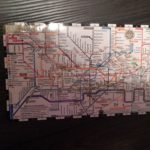
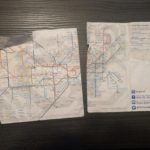
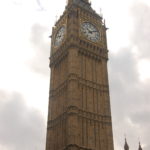
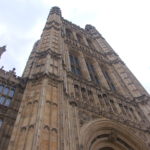 I step out, and there was the bleepity-bleep Big Ben. OMG. It’s BIG. So I start to take pictures, walk around and Holy. Hell.
I step out, and there was the bleepity-bleep Big Ben. OMG. It’s BIG. So I start to take pictures, walk around and Holy. Hell. 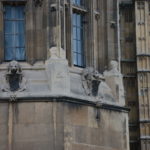
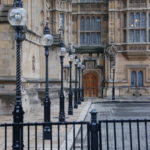
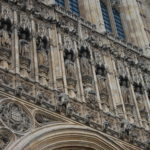

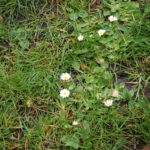
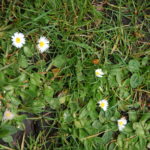 And I found some little white and yellow flowers. I took a picture. Why? Aside from the fact that they were pretty, in Hyde Park [the day before] I came across an Arabic woman probably about my age. She was taking a picture just as I passed. She said to me, a little sheepish, “They are pretty flowers.” And I said, “I thought the same thing this morning!” I had. I’d looked at them during my initial walk through the park and thought how pretty and cheerful they were.
And I found some little white and yellow flowers. I took a picture. Why? Aside from the fact that they were pretty, in Hyde Park [the day before] I came across an Arabic woman probably about my age. She was taking a picture just as I passed. She said to me, a little sheepish, “They are pretty flowers.” And I said, “I thought the same thing this morning!” I had. I’d looked at them during my initial walk through the park and thought how pretty and cheerful they were.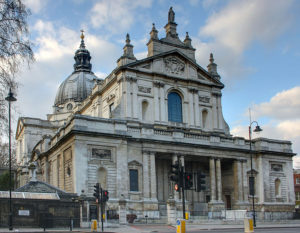
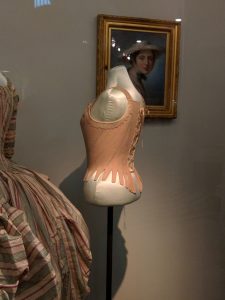
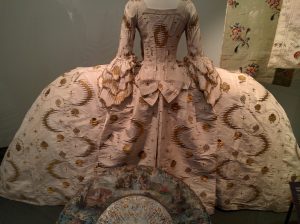
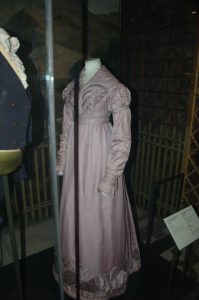
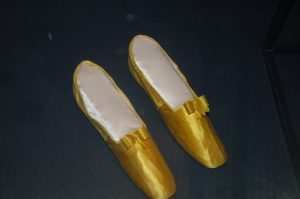
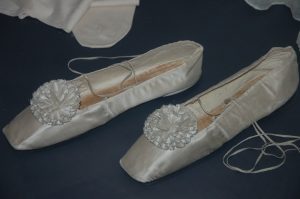
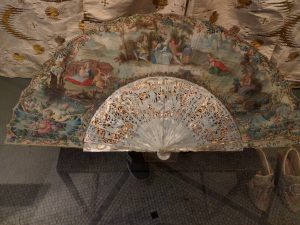
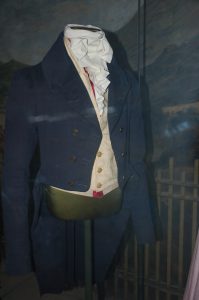
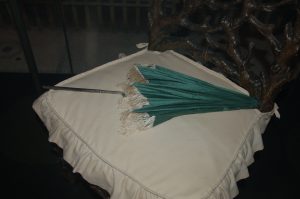 And when I see those gowns and morning jackets and horrifically narrow shoes, I think of where they wore them, and what they did in them, and how their actions shaped my life. Maybe some statesman drafted a world-altering law while wearing that jacket. Maybe the woman carrying this parasol fought for women’s equality.
And when I see those gowns and morning jackets and horrifically narrow shoes, I think of where they wore them, and what they did in them, and how their actions shaped my life. Maybe some statesman drafted a world-altering law while wearing that jacket. Maybe the woman carrying this parasol fought for women’s equality.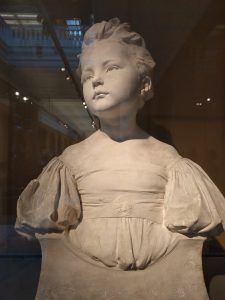 I took lots of pictures of the marble statues because I find it interesting to know what people looked like in the past (see me waxing poetic above). Put a face to the name, so to speak. And because marble is so white and pure, there is something both sad and beautiful about them, even when the faces are smiling.
I took lots of pictures of the marble statues because I find it interesting to know what people looked like in the past (see me waxing poetic above). Put a face to the name, so to speak. And because marble is so white and pure, there is something both sad and beautiful about them, even when the faces are smiling.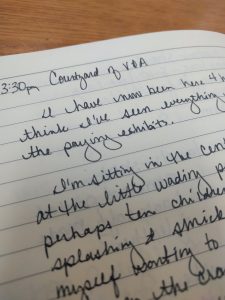
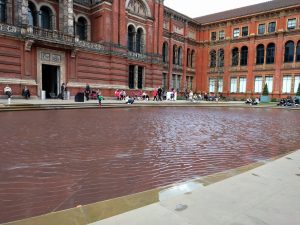
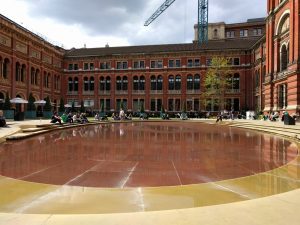 I’m sitting in the central courtyard at the little wading pool. There are perhaps ten children running and splashing and shrieking. I find myself wanting to join them, though I fancy the American would be taken up as crazy. [I took the pictures after the kids left to protect them.]
I’m sitting in the central courtyard at the little wading pool. There are perhaps ten children running and splashing and shrieking. I find myself wanting to join them, though I fancy the American would be taken up as crazy. [I took the pictures after the kids left to protect them.]